Camera sees Moon Lander Apollo 15
APOLLO 11 Moon landing footage was faked. YES, they DID land on the Moon, but LATER.
Remember the VERY BAD TV picture?
The new Indian Moon probe Chandrayaan will have a camera that can resolve 16feet items on the surface of the moon.

The Terrain Mapping Camera (TMC) is a CCD camera with 5 m resolution and a 40 km swath in the panchromatic band and will be used to produce a high-resolution map of the Moon

other instruements seem to be geared towards moon mining for profit. Again, the public pays for the research that the private corporations later profit from.
INDIA MOON PROBE 2008
The scientific payload has a total mass of 90 kg and contains six Indian instruments and six foreign instruments.
- The Terrain Mapping Camera (TMC) is a CCD camera with 5 m resolution and a 40 km swath in the panchromatic band and will be used to produce a high-resolution map of the Moon.[8]
- The Hyper Spectral Imager (HySI) will perform mineralogical mapping in the 400-900 nm band with a spectral resolution of 15 nm and a spatial resolution of 80 m.
- The Lunar Laser Ranging Instrument (LLRI) will determine the surface topography.
- An X-ray fluorescence spectrometer (C1XS) covering 1- 10 keV with a ground resolution of 25 km and a Solar X-ray Monitor (XSM) to detect solar flux in the 1–10 keV range.[9] C1XS will be used to map the abundance of Mg, Al, Si, Ca, Ti, and Fe at the surface, and will monitor the solar flux. This payload is a collaboration between Rutherford Appleton laboratory, U.K, ESA and ISRO.
- A High Energy X-ray/gamma ray spectrometer (HEX) for 30- 200 keV measurements with ground resolution of 40 km, the HEX will measure U, Th, 210Pb, 222Rn degassing, and other radioactive elements
- Moon Impact probe (MIP) developed by the ISRO, is a small satellite that will be carried by Chandrayaan-1 and will be ejected once it reaches 100 km orbit around Moon, to impact on the Moon. MIP carries three more instruments, namely, a high resolution mass spectrometer, an S-Band altimeter and a video camera. The MIP also carries with it a picture of the Indian flag, its presence marking as only the fourth nation to place a flag on the Moon after Russia (however, Luna 2 carried the Soviet flag and coat of arms), United States and Japan.[10]
- Among foreign payloads, The Sub-keV Atom Reflecting Analyser (SARA) from the ESA will map composition using low energy neutral atoms sputtered from the surface.[11]
- The Moon Mineralogy Mapper (M3) from Brown University and JPL (funded by NASA) is an imaging spectrometer designed to map the surface mineral composition.
- A near infrared spectrometer (SIR-2) from ESA, built at the Max Planck Institute for Solar System Research, Polish Academy of Science and University of Bergen, will also map the mineral composition using an infrared grating spectrometer. The instrument will be similar to that of the Smart-1 SIR.[12]
- S-band miniSAR, designed, built and tested for NASA by a large team that includes the Naval Air Warfare Center, Johns Hopkins University Applied Physics Laboratory, Sandia National Laboratories, Raytheon and Northrop Grumman; it is the active SAR system to search for lunar polar ice. The instrument will transmit right polarized radiation with a frequency of 2.5 GHz and will monitor the scattered left and right polarised radiation. The Fresnel reflectivity and the circular polarisation ratio (CPR) are the key parameters deduced from these measurements. Ice shows the Coherent Backscatter Opposition Effect which results in an enhancement of reflections and CPR, so that water content of the Moon polar region can be estimated.
- Radiation Dose Monitor (RADOM-7) from Bulgaria is to map the radiation environment around the Moon.
The Descent Module of the Apollo landers and lunar rovers are planned to be photographed by the 2009 Lunar Reconnaissance Orbiter camera.[17] The much smaller Mars landers have already been photographed from Mars Orbit.[18]
| Abandoned Spaceships | 7.11.2005 |
| For the first time since the 1970s, a NASA spacecraft will get clear pictures of Apollo relics on the Moon. + Play Audio | + Download Audio | + Historia en Español | + Email to a friend | + Join mailing list Houston: "We've got you on television now. We have a good picture." Gene Cernan, Apollo 17 commander: "Glad to see old Rover's still working." "Rover," the moon buggy, sat outside with no one in the driver's seat, its side-mounted TV camera fixed on Challenger. Back in Houston and around the world, millions watched. The date was Dec. 19, 1972, and history was about to be made. Above: The Apollo 17 moon buggy, circled, waits to film the departure of its mothership, Challenger. [More] Suddenly, soundlessly, Challenger split in two (movie). The base of the ship, the part with the landing pads, stayed put. The top, the lunar module with Cernan and Jack Schmitt inside, blasted off in a spray of gold foil. It rose, turned, and headed off to rendezvous with the orbiter America, the craft that would take them home again. Those were the last men on the Moon. After they were gone, the camera panned back and forth. There was no one there, nothing, only the rover, the lander and some equipment scattered around the dusty floor of the Taurus-Littrow valley. Eventually, Rover's battery died and the TV transmissions stopped. That was our last good look at an Apollo landing site. Many people find this surprising, even disconcerting. Conspiracy theorists have long insisted that NASA never went to the Moon. It was all a hoax, they say, a way to win the Space Race by trickery. The fact that Apollo landing sites have not been photographed in detail since the early 1970s encourages their claims.
And why haven't we photographed them? There are six landing sites scattered across the Moon. They always face Earth, always in plain view. Surely the Hubble Space Telescope could photograph the rovers and other things astronauts left behind. Right? Wrong. Not even Hubble can do it. The Moon is 384,400 km away. At that distance, the smallest things Hubble can distinguish are about 60 meters wide. The biggest piece of left-behind Apollo equipment is only 9 meters across and thus smaller than a single pixel in a Hubble image. Better pictures are coming. In 2008 NASA's Lunar Reconnaissance Orbiter will carry a powerful modern camera into low orbit over the Moon's surface. Its primary mission is not to photograph old Apollo landing sites, but it will photograph them, many times, providing the first recognizable images of Apollo relics since 1972. The spacecraft's high-resolution camera, called "LROC," short for Lunar Reconnaissance Orbiter Camera, has a resolution of about half a meter. That means that a half-meter square on the Moon's surface would fill a single pixel in its digital images. Apollo moon buggies are about 2 meters wide and 3 meters long. So in the LROC images, those abandoned vehicles will fill about 4 by 6 pixels. What does a half-meter resolution picture look like? This image of an airport on Earth has the same resolution as an LROC image. Moon buggy-sized objects (automobiles and luggage carts) are clear: Above: An example of half-meter resolution overhead photography, the same resolution that LROC images will be. This photo of an airport shows airplanes of various sizes as well as many car-sized service vehicles. Notice how shadows help the objects to stand out from the background. The LROC high-res images will also be grayscale, but will be less grainy than the example above thanks to its digital imaging technology. Image courtesy MIT Digital Orthophoto Project. "I would say the rovers will look angular and distinct," says Mark Robinson, research associate professor at Northwestern University in Evanston, Illinois, and Principal Investigator for LROC. "We might see some shading differences on top from seats, depending on the sun angle. Even the rovers' tracks might be detectable in some instances." Even more recognizable will be the discarded lander platforms. Their main bodies are 4 meters on a side, and so will fill an 8 by 8 pixel square in the LROC images. The four legs jutting out from the platforms' four corners span a diameter of 9 meters. So, from landing pad to landing pad, the landers will occupy about 18 pixels in LROC images, more than enough to trace their distinctive shapes.Shadows help, too. Long black shadows cast across gray lunar terrain will reveal the shape of what cast them: the rovers and landers. "During the course of its year-long mission, LROC will image each landing site several times with the sunlight at different angles each time," says Robinson. Comparing the different shadows produced would allow for a more accurate analysis of the shape of the objects. Enough nostalgia. LROC's main mission is about the future. According to NASA's Vision for Space Exploration, astronauts are returning to the Moon no later than 2020. Lunar Reconnaissance Orbiter is a scout. It will sample the Moon's radiation environment, search for patches of frozen water, make laser maps of lunar terrain and, using LROC, photograph the Moon's entire surface. By the time astronauts return, they'll know the best places to land and much of what awaits them. Two high-priority targets for LROC are the Moon's poles.
Above: Artist Pat Rawlings' concept of a polar moonbase. [More] Once a moonbase is established, what's the danger of it being hit by a big meteorite? LROC will help answer that question. "We can compare LROC images of the Apollo landing sites with Apollo-era photos," says Robinson. The presence or absence of fresh craters will tell researchers something about the frequency of meteor strikes. LROC will also be hunting for ancient hardened lava tubes. These are cave-like places, hinted at in some Apollo images, where astronauts could take shelter in case of an unexpected solar storm. A global map of these natural storm shelters will help astronauts plan their explorations. No one knows what else LROC might find. The Moon has never been surveyed in such detail before. Surely new things await; old abandoned spaceships are just the beginning. | |
The "halo" area around Apollo 15 landing site observed by Terrain Camera on SELENE(KAGUYA)
Japan Aerospace Exploration Agency (JAXA)
The Japan Aerospace Exploration Agency (JAXA) reported on the "halo" generated by the Apollo 15* lunar module engine exhaust plume that was detected in the data from Terrain Camera (TC) image.
This was an image processed by the SELENE mission instrument team from the observation data of the Apollo 15 landing site on the moon (the foot of the Apennine Mountains encircling the Mare Imbrium close to Hadley Rille). This is the world's first report on the detection of the "halo" through observations after the end of the Apollo program.
Through the produced three-dimensional image of the same landscape as that of the picture taken by the Apollo 15 crew, the spatial accuracy of the TC observation was verified. The three dimensional view of the TC clearly shows the layers of lava flows that erupted approximately about 3.2 billion years ago in the upper part of the Hadley Rille.
* The Apollo 15 was the ninth manned mission, and fourth lunar landing mission of the Apollo program. The Apollo 15 was launched on July 26, 1971 (JST), landed on the Moon on July 31, 1971, and then landed back on Earth on August 8, 1971. This mission was the first "J mission" and was primarily concerned with scientific research, and stayed longer on the Moon than previous Apollo missions.
The "Falcon" Lunar Module of the Apollo 15 landed on the moon on July 31, 1971 (JST) near the Hadley Rille, at the foot of the Apennine Mountains encircling the Mare Imbrium. The Hadley Rille is a sinuous Rille with a length of 80km and depth of 300m. One of the missions of the Apollo 15 was to study the origin of this Rille. The Rille and the towering mountains near the Rille make this a place of scenic beauty.
This three-dimensional (3D) image was produced from stereo pair image data of the Terrain Camera (TC). The view point was set to show the Rille from the west at a height of 15km.
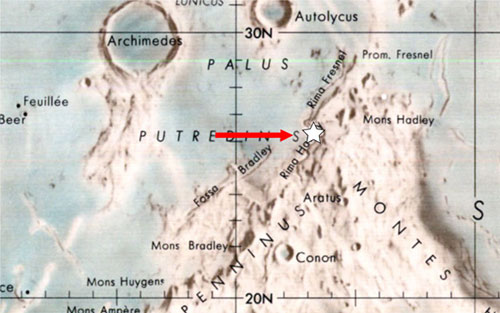
(The star mark is the landing site, and the red arrow stands for the view direction of Fig 1)
(reference: http://www.lpi.usra.edu/)

The reflectivity of the "halo" area became brighter than the original one by the Apollo 15* lunar module engine exhaust plume and the probable "halo" area was confirmed.

(provided from NASA (left image : AS15-87-11719, right image : AS15-9430))
Figure 4 shows the reflectivity change of the surface before and after the landing of the Apollo 15. The left image was taken obliquely from the descending lunar module. The right image was taken from the command service module from an altitude of 110 km on the second orbit of the Moon after the landing. The circle area includes the landing site, and the "halo" can be seen in the right image.
(Fig 5) TC 3D image and the picture taken by Apollo 15 astronaut. (left image : TC, right image : Apollo)
The viewpoint of the 3D image produced from TC stereo-pair data can be freely changed. The 3D image from TC data shows quite a similar landscape (left image) to the picture taken by the Apollo 15 crew (right image; provided from NASA: AS15-82-11122HR). Although the small objects (e.g. rocks) cannot be shown in this TC image because their respective sizes are less than the spatial resolution of the TC of 10 meters, the shape of the mountains and hills is almost the same, indicating the spatial observation accuracy of the TC is very high.
(Fig.6) This still image is a cutout from the movie taken by the SELENE (KAGUYA) HDTV (telephoto camera) on January 29, 2008 (JST.). The Apollo 15 landing site, as well as the Montes Apenninus, Hadley Rille (in the left) and Archimedes crater (in the center) are seen in this image.
(Fig 7) 3D view image around the Hadley Rille obtained by TC
During the Apollo 15 mission, astronauts also collected samples of mare basalt near the Hadley Rille. They confirmed that the Mare Imbrium was composed of many layers of lava flows, from several to ten meters in depth. The 3D view of the TC looking at the southeast direction from the northwest clearly shows the layers of lava flows on the upper parts of the Rille's wall. These layers were probably formed approximately about 3.2 billion years ago.
Finding Apollo
Forty years later, we’re about to see what the moonwalkers left behind.
- By Tony Reichhardt
- Air & Space Magazine, September 01, 2008
The flag is probably gone. Buzz Aldrin saw it knocked over by the rocket blast as he and Neil Armstrong left the moon 39 summers ago. Lying there in the lunar dust, unprotected from the sun’s harsh ultraviolet rays, the flag’s red and blue would have bleached white in no time. Over the years, the nylon would have turned brittle and disintegrated.
Dennis Lacarrubba, whose New Jersey-based company, Annin, made the flag and sold it to NASA for $5.50 in 1969, considers what might happen to an ordinary nylon flag left outside for 39 years on Earth, let alone on the moon. He thinks for a few seconds. “I can’t believe there would be anything left,” he concludes. “I gotta be honest with you. It’s gonna be ashes.”
There are other signs of aging at Tranquillity Base. The shiny gold foil on the base of the lunar lander is shiny no more—it would have darkened and flaked away long ago. The once-white life support backpacks, tossed out unceremoniously after Armstrong and Aldrin made their brief spacewalks, have likely turned yellow. The TV camera, the seismometer, the discarded hammer—anything made of glass or metal—are probably okay. And the famous bootprints? They may still be as crisp as the day they were made. Or, they may have the thinnest coating of dust from small grains moving around continually on the lunar surface (see “Stronger than Dirt,” Aug./Sept. 2006).
The truth is, no one knows exactly what the Apollo landing sites will look like after four decades. Nobody thought it would take us this long to go back.
And now we are.
New cameras in orbit around the moon have begun returning photos of sights unseen in a generation. Japan’s Kaguya spacecraft, which arrived in lunar orbit in October, took a picture of the Apollo 15 landing site in February that clearly showed a tiny patch of white on the dark gray landscape—dust disturbed by Dave Scott and Jim Irwin’s rocket engine as they touched down in Mare Imbrium in July 1971. They and other Apollo moonwalkers routinely photographed the white patches when they looked back at their landing sites from lunar orbit before returning home. Kaguya’s best camera has a resolution, or ability to separate two objects, of 10 meters (33 feet)—just enough to make out the white patch of disturbed soil. The camera can’t quite resolve the squat, 30-foot-wide base of the Apollo 15 lander sitting in the middle of that patch. But the Kaguya photo shows a dark feature that may be the lander’s shadow.
Until Kaguya, there hadn’t been a camera good enough to spot Apollo artifacts on the moon since the last astronauts left, in 1972. Neither the U.S. Clementine nor the European SMART-1 moon probes, launched in 1994 and 2003, respectively, had enough resolution. (In case you’re wondering, even the best ground-based telescopes can’t make out Apollo hardware on the moon. They have the resolution—some produce sharper images than the Hubble Space Telescope—but the objects left by the astronauts aren’t bright enough to be seen.)
So it’s a job for lunar orbiters. Next up is Chandrayaan, India’s first planetary science spacecraft, which is due to arrive at the moon this fall with a camera twice as sharp as Kaguya’s. That should be good enough to see more than smudges in the dirt, according to Mark Robinson, a planetary scientist at Arizona State University whose own high-resolution camera will fly on NASA’s Lunar Reconnaissance Orbiter (LRO) in November. “I will be surprised if Chandrayaan can’t detect the [lunar landers],” says Robinson. The bases of the landers, six of which are still on the moon, will be only about two picture elements, or pixels, across in the five-meter-resolution images—not enough for clear identification. But in photos taken at low sun angles, says Robinson, the landers’ shadows should appear as dark streaks up to 10 pixels long. This technique has paid off in the past. Long before the first Apollo landing, scientists studying photos taken by the Lunar Orbiter 3 spacecraft noticed a shadow cast by the Surveyor 1 robot, which had landed on the moon eight months earlier.
If the Chandrayaan scientists are “really, really lucky,” says Robinson, they might also detect the shadows of the lunar rovers, the two-man buggies that astronauts left at the Apollo 15, 16, and 17 sites. The 10-foot-long rovers would be less than a pixel in size, but their shadows could be as long as four or five pixels, says Robinson.
His own instrument on the LRO will do a thorough job of “revisiting” the Apollo sites, beginning in early 2009. The narrow-angle camera can resolve details about the size of a microwave oven. As the LRO spacecraft orbits from pole to pole and the moon turns slowly beneath it, it will eventually get a look at all six Apollo landing sites. The resulting pictures should clearly show the landers and the rovers, says Robinson. Even some of the larger experiment packages left behind by the moonwalkers might be identifiable from their shadows. The LRO images should also show rover tracks and the dark areas where the astronauts scuffed up the lunar soil. The new information can then be used to refine maps of the moonwalkers’ historic traverses.
And that’s just Apollo. Some of the most fascinating pictures the LRO takes will show obscure spacecraft that nobody’s seen, or even thought much about, since they left Earth more than 40 years ago. Phil Stooke, a planetary geographer at the University of Western Ontario and author of The International Atlas of Lunar Exploration, has a list of targets he can’t wait to see, including two Russian spacecraft—Luna 9, which in 1966 made the first soft landing on the moon, and Luna 17, which in 1970 delivered the first geological rover, Lunokhod 1. Neither spacecraft’s location is precisely known, says Stooke. Nor are the exact locations of many of the craters made when orbiters and spent rocket stages crashed into the moon in the 1960s. Altogether, about 100 tons of junk is strewn across dozens of spots around the moon. Over the next two years, we’ll rediscover much of it.
Of course, the LRO’s mission is not finding old spacecraft. The orbiter is producing high-resolution maps for planning the next wave of lunar exploration. But since astronauts aren’t expected to head moonward until 2020 at the earliest, the initial users of the maps are likely to be surface-exploring robots, and the first of those could arrive as early as next summer, in time for the 40th anniversary of Apollo 11. An intense contest is under way among several groups vying for the $30 million Google Lunar X Prize, which will go to the first privately funded team that lands a rover on the moon, drives it at least 500 meters (about a third of a mile), and returns video and still images to Earth.
Just as the first X Prize spurred aircraft designer Burt Rutan to build a one-man rocketplane that flew to the edge of space and back (see “Confessions of a Spaceship Pilot,” June/July 2005), the Google prize is meant to encourage innovation in robotic exploration of the moon. So far, 13 teams have entered, from as far away as Romania and Malaysia.
The Rutan in this race is Carnegie Mellon University’s Red Whittaker, one of the world’s foremost roboticists. Whittaker-built rovers have explored volcanoes, deserts, and Antarctic ice fields. Last year one of his vehicles won the DARPA Urban Challenge, a road rally for autonomous robot cars, sponsored by the Defense Advanced Research Projects Agency. Whittaker’s X Prize team, Astrobotic Technology, is loaded with experience, starting with project manager Tony Spear, the man who led the NASA mission that in 1996 landed the Sojourner rover on Mars. The University of Arizona’s Lunar and Planetary Laboratory, currently operating the Phoenix spacecraft on Mars, is a partner. Astrobotic’s president is David Gump, a space entrepreneur who in 1989 started a venture called LunaCorp, which also planned to drive a rover around the moon and sell the video. Whittaker was to have built the robot. Although LunaCorp folded in 2003, Gump is betting that it was mostly because the company was ahead of its time.

Not that Astrobotic’s proposed “Tranquillity Trek” to the Apollo 11 site will be a cakewalk. For one thing, says Gump, the mission will cost about $100 million—far more than Google is paying in prize money. While he looks for financial backers, the technical team is working feverishly, trying to hold on to the possibility of a launch next year. Astrobotic claims that once it raises the money, it can be on the moon within 18 months.





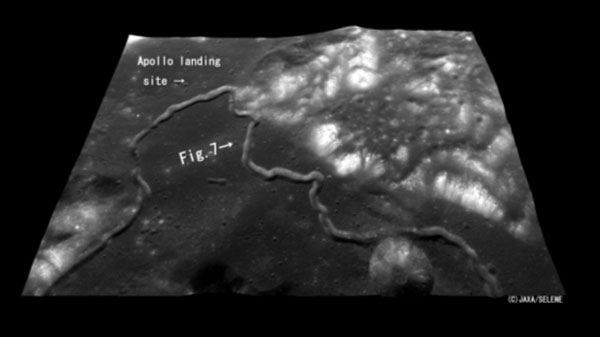
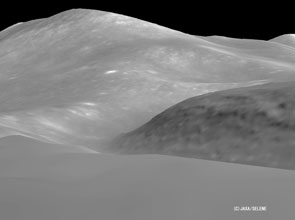
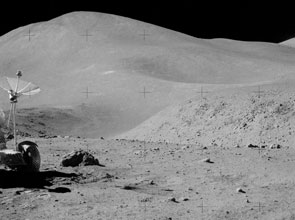
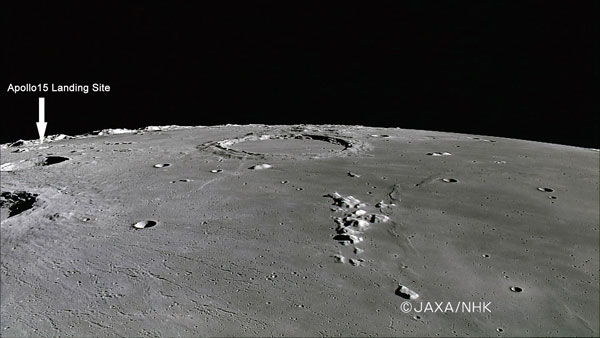

 Earth's magnetic field:
Earth's magnetic field:

0 Comments:
Post a Comment
<< Home